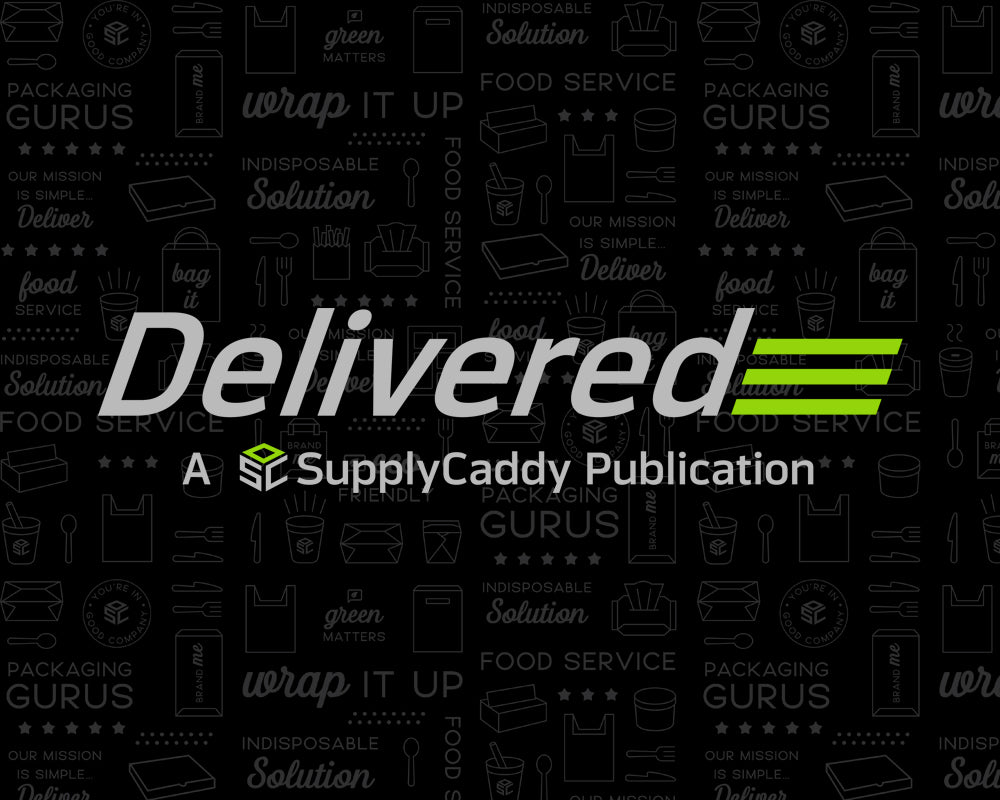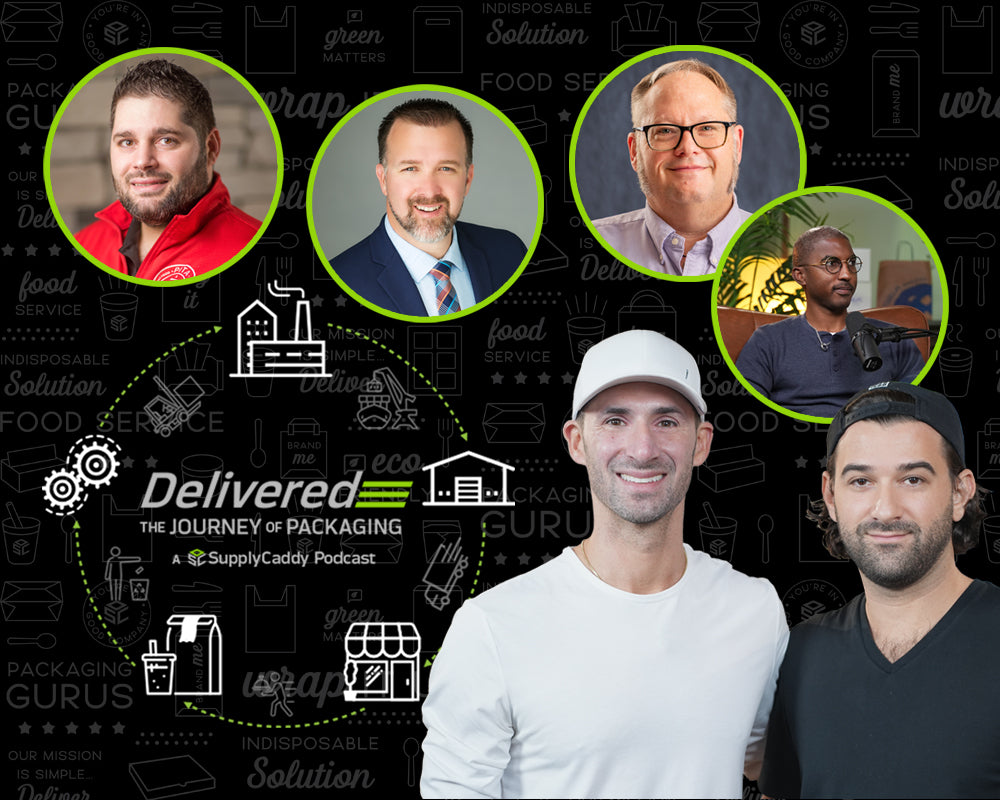Sustainable food packaging still comes with a lot of baggage. For restaurants already juggling labor shortages, rising ingredient costs, and delivery logistics, it’s easy to write off eco-friendly packaging as too expensive, too complicated, or just not worth the hassle. But the food service industry is changing, and your packaging can’t stay stuck in 2015.
At SupplyCaddy, we’ve worked with restaurants of all sizes, from fast-casual chains to ghost kitchens, and we’ve heard every excuse in the book. “It’s too flimsy.” “It doesn’t fit our brand.” “Our customers don’t notice.” Not only are those ideas outdated, they’re costing businesses an opportunity to cut waste, boost customer loyalty, and even make their meals more shareable on social media.
In this blog post, we will explore the five most common myths about sustainable food packaging and debunk them with real-world insights and updated facts.
What Is Sustainable Food Packaging?
Sustainable food packaging goes beyond simply replacing plastic with paper. It’s about choosing packaging that has a lower impact on the environment at every stage, starting from how it’s made to how it’s disposed of or reused. That means using materials that break down naturally, can be easily recycled, or are designed to use fewer resources without compromising strength or quality.
Many restaurants are adopting eco-conscious options to reduce their use of single-use plastics, lower carbon emissions, and align with the values their customers care about. Popular materials include bagasse, a byproduct of sugarcane waste; PLA, a plant-based plastic derived from cornstarch; FSC-certified paper, and recyclable PET. What makes packaging sustainable isn’t just the material; it’s how the entire process helps protect the planet and the communities it serves.
Top 5 Restaurant Myths About Sustainable Food Packaging—Debunked
Myth 1: Eco-Friendly Packaging Is Too Weak for Greasy or Hot Foods
This might’ve been true in the early 2010s. But sustainable food packaging has come a long way. Today’s eco-friendly packaging can handle everything from hot wings to steaming curries and oily burgers without leaking, warping, or falling apart.
Modern compostable food packaging is engineered for performance. Containers made from molded fiber or bagasse are microwave-safe and grease-resistant. PLA-lined paper cups and bowls keep soups hot and drinks insulated without the need for harmful plastic liners. Many of these materials have undergone third-party certifications for food safety and durability. Restaurants around the world use sustainable packaging for takeout and delivery daily, including large chains. If they can trust these solutions for millions of orders, so can you.
Myth 2: You Have to Sacrifice Branding for Sustainability
Sustainable packaging opens more doors for branding than traditional plastic ever could. Custom printing, embossing, and color options are available on nearly every eco-friendly packaging option on the market.
At SupplyCaddy, we offer free customized branding for your packaging. That means your restaurant logo, tagline, colors, and even QR codes can be printed on boxes, cups, and bags without sacrificing sustainability. Sustainable packaging materials, such as kraft paper, bamboo fiber, and molded pulp, may have a more natural look, but they can still incorporate vibrant designs.
Myth 3: Customers Don’t Care About Packaging—Only the Food Matters
In a study conducted by McKinsey US consumer sentiment survey, over 60% of Gen Z and Millennial consumers say they are more likely to buy from brands that prioritize sustainability. And when it comes to food, packaging plays a critical role in shaping their perception of quality and care. Imagine ordering a fresh poke bowl and receiving it in a flimsy, sweaty plastic container. Now imagine the same meal arriving in a compostable, branded, well-ventilated bowl that keeps everything crisp and fresh. Which experience builds trust? Which one gets shared on Instagram?
Customers notice packaging. They associate it with your values. In the age of delivery apps and short attention spans, it may even be the deciding factor in whether they order from you again.
Myth 4: Compostable Packaging is the Most Eco-Friendly Solution
Compostable food packaging is a great option, but it’s not the only one, nor is it always the best one. The truth is, the most sustainable solution depends on your operations, your customers, and your location’s waste management capabilities. Compostable packaging can help, but it's not a one-size-fits-all solution to plastic waste.
Compostable packaging is most effective when commercial composting facilities are readily available. In areas where these are limited, recyclable or reusable packaging might be a more practical and sustainable choice. Also, some compostable packaging still requires high heat to break down, which backyard compost piles can’t provide.
That’s why it’s essential to understand the full lifecycle of your packaging. And always consider how your customers will dispose of the product after use. Education is a key part of any sustainable strategy.
Myth 5: Sustainable Means Brown, Boring, and Ugly
Sustainable food packaging has evolved far beyond plain kraft boxes and dull designs. Today, it can be sleek, colorful, minimal, playful, or whatever fits your brand. There are molded containers with stylish textures, paper wraps that pop with bold typography, and clear compostable containers that showcase your food without the plastic guilt.
With digital printing and design innovation, sustainability no longer means compromise. Eco-friendly packaging can elevate your brand, not drag it down. If your packaging feels boring, it’s not a sustainability issue; that’s just a design issue. And we can you help fix that.
Social Media and Eco Packaging: Why It’s More Shareable Than You Think
People love to share food photos, unboxing videos, and aesthetically pleasing meals online. The proper packaging can help your brand go viral. Sustainable packaging makes your food more photogenic. A recyclable wrap with custom branding, a compostable box featuring an artistic logo, or a clever printed message on the inside of the lid, these small touches stick with customers. They snap photos, tag your account, and give you free marketing.
On platforms like TikTok and Instagram, customers reward brands that care about sustainability. They’re drawn to storytelling and authenticity. Sharing that your packaging is recyclable or compostable, even with a simple printed icon, builds social proof. And when your design looks good, it makes their content look better. So don’t overlook the impact your packaging can have online. It’s not just about holding food, it’s about creating moments worth sharing.
Compostable vs. Biodegradable vs. Recyclable Packaging
Compostable packaging breaks down into organic matter in a composting environment, usually within 90 days. It turns into nutrient-rich soil, leaving no toxic residue. It often needs industrial composting facilities to degrade fully.
Biodegradable packaging also breaks down, but the timeline is unclear, and it may leave microplastics behind. Some so-called “biodegradable” plastics persist in the environment for years. Be cautious, this label is often used without regulation.
Recyclable packaging can be processed and reused to make new products. It’s only sustainable if the local waste stream supports it. Cleanliness and correct sorting are critical to ensure recyclables don’t end up in landfills.
Choosing between these options depends on your geographical location and the nature of your customer base. Ideally, use packaging that aligns with local disposal infrastructure. Always clearly communicate on the packaging how to dispose of it; your customers will appreciate the guidance.
Looking for a Reliable Food Packaging Supplier? Choose SupplyCaddy Today
Sustainable food packaging doesn’t have to be complicated, expensive, or tedious. At SupplyCaddy, we make it easy for restaurants to make the switch with confidence. Whether you're looking for compostable food containers, recyclable paper bowls, or custom-printed eco-friendly cups, we’ve got you covered.
We have successfully delivered over 1 billion products to restaurants worldwide. With manufacturing facilities in North America, South America, and Europe, we offer high-quality, affordable, and sustainable packaging solutions that meet the demands of modern food service businesses. And yes, we include free customized branding to help you stand out while doing the right thing for the planet. Contact us today at hello@supplycaddy.com.


